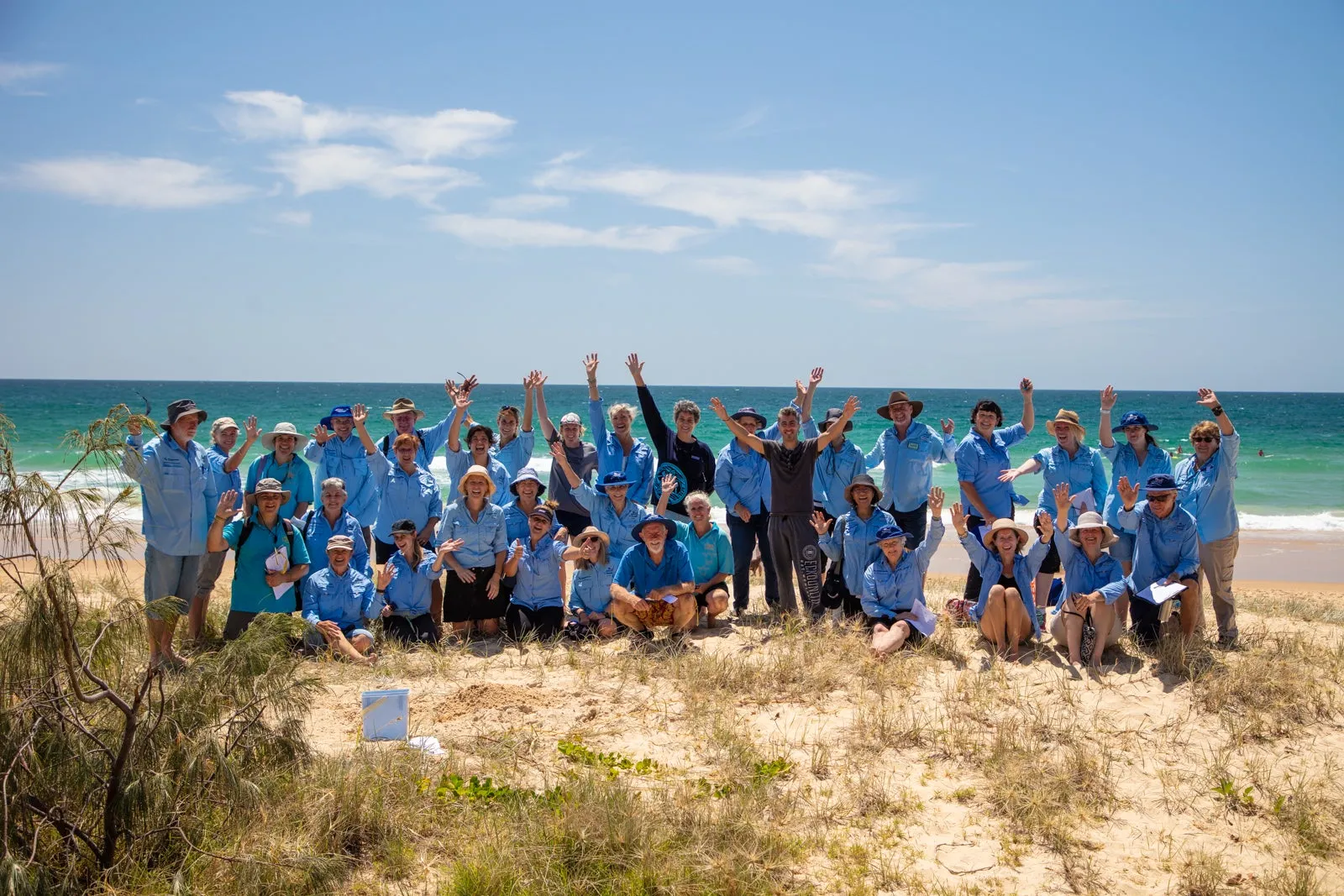Loggerhead turtle movement
Mystify is taking the mystery out of loggerhead turtle movement
Article by Lesley Dimmock, TurtleCare volunteer
Known as the ‘Goldilocks’ of marine turtles on the Sunshine Coast, she builds her nest in sand that’s not too wet and not too dry, it’s got to be just right.
Meet Mystify, the loggerhead turtle who has been closely monitored by Sunshine Coast Councils TurtleCare volunteers on her visits to Buddina beach for the last 10 years. Their records show that she is a fussy nester who likes a location far from the high water mark which is covered thin vegetation (usually spinifex which is easier to dig), and sand that is just the right firmness for her nest dimension desires.
TurtleCare volunteers have also noted that Mystify always chooses a safe, dark site for her nest which is shielded from direct light. Turtle hatchlings orientate to the lowest light horizon when emerging from the nest, a lower level of light pollution gives Mystify’s hatchlings the best chance of survival. Which is just as well – there are only around 500 females left in the east Australian loggerhead population, with Sunshine Coast beaches supporting habitat critical to this endangered species’ survival.
Officially known to the Department of Environment and Science (DES) by her tag number K70912, Mystify was first sighted and tagged by TurtleCare on the night of December 11th 2010, and has been observed on Buddina beach a further 16 times (although TurtleCare citizen scientists suspect that she has snuck up onto the beach unseen and attempted to nest at least four times that amount).
Mystify earnt her namesake for her sometimes unpredictable nesting behaviour. Volunteers can often predict the timing and the location of her beach visits, only for her to change her mind and “turnaround” (leave without laying), wander along the dunes and nest successfully somewhere else.
Most marine turtles over the age of 30 return every 2 to 6 years to nest, but this reliable reptile has been seen exclusively at Buddina beach every two years on average. These records indicate that Mystify’s foraging grounds are likely to be in environmentally healthy waters and closer to the Sunshine Coast than those of most other females, allowing her a shorter than usual remigration period (return time).
Our intricate knowledge of Mystify’s movements and hatchling history are all thanks to the hard work and dedication of TurtleCare volunteers, who have targeted their surveys to intercept returning nesting turtles. The wider TurtleCare monitoring program includes early morning and night patrols to record nest locations monitor nests and determine the success of the nest. TurtleCare’s activities and record keeping supports the recovery of loggerhead turtle populations in the south-west Pacific, and all data is provided to the DES’s Turtle Conservation Project.
It’s through the targeted beach patrols and record keeping that we know in this season alone Mystify has laid three clutches, with close to 500 of her hatchlings reaching the ocean. So good on her for being a Goldilocks! Mystify’s fussy ways have resulted in a high quality and quantity of hatchling success, making a valuable contribution to the Sunshine Coast’s important population of nesting loggerhead turtles.

